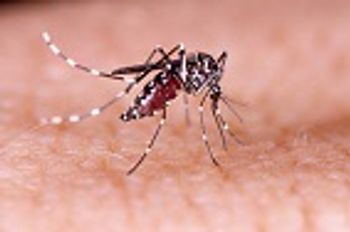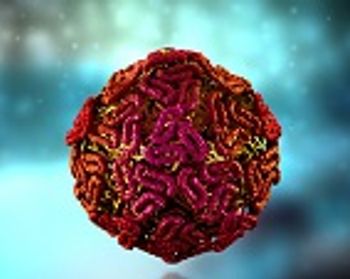
Congressional leaders brokered a compromise Wednesday that keeps the government running, provides financial relief to the beleaguered city of Flint, Michigan, and finally funds Zika prevention efforts.
Brian P. Dunleavy has been covering health and medical research for more than 25 years, for United Press International and EverydayHealth.com, among other outlets. He is also the former editor of Infectious Disease Special Edition. In addition, he has written on other subjects for Biography.com, History.com, the Village Voice and amNewYork, among others. He holds a master’s degree from the University of Missouri School of Journalism.

Congressional leaders brokered a compromise Wednesday that keeps the government running, provides financial relief to the beleaguered city of Flint, Michigan, and finally funds Zika prevention efforts.

Babies born to mothers infected with the Zika during pregnancy may have the virus in their systems for more than 2 months after birth.

Despite the ongoing funding stalemate in Congress, several research initiatives hoping to yield an effective vaccine against Zika are advancing through the development process.

After plaguing much of Brazil and the Caribbean since late 2014, the Zika virus “crisis”—such as it is—seems to have migrated eastward—far eastward.

Researchers at Central Michigan University have found that proteins in the saliva of Aedes aegypti mosquitoes bind to Dengue virus and inhibit disease transmission to human cells and mice.

Researchers are gathering more evidence of the exact effects of Zika virus infection on eye health.

With so much of the world focusing on Zika virus in the Americas and Southeast Asia, it’s easy to forget that there are other mosquito-borne viruses causing serious public health problems globally—namely, Dengue fever and Chikungunya.

With more than 90 locally transmitted cases of Zika virus infection confirmed in Florida, and states from the southeast to the Midwest fearing similar outbreaks, the Centers for Disease Control and Prevention (CDC) has made bolstering its network of approved testing laboratories for the virus a priority.

A Zika infection case in Utah has raised more questions about virus transmission.

Health officials in Singapore have reported a significant increase in the incidence of Zika virus infection in the country in recent weeks.

On the same day officials in Florida declared the Wynwood section of Miami, “ground zero” for the Zika virus in the state, no longer “active” for local transmission, officials from a state halfway across the country expressed concerns over a “pending disaster” involving the mosquito-borne infection.

A study comparing babies born with microcephaly and closely matched, but otherwise healthy, controls has confirmed a link between the birth defect and Zika virus.

The Centers for Disease Control and Prevention may revisit its travel guidance on south Florida as soon as early next week, if there are no new cases involving local transmission of the Zika virus in the region; however, local businesses continue to be impacted.

Using the mainstream media as the medium for their message, some of the nation’s leading physicians urged Congress to pass a “clean, bipartisan funding measure” to fight the spread of Zika, both in the United States and abroad, and to “protect pregnant women” from the complications associated with the virus.

Experts who predicted that West Nile virus would present Louisiana with its greatest infectious disease-related challenge in the aftermath of the horrific flooding in the state in August appear to have been correct.

Researchers at the University of Washington may have gained new insight into exactly how Zika virus infection damages the developing brain of the fetus in pregnant women.

Pregnant women or women planning to become pregnant concerned about the effects of Zika on their health as well as the health of their unborn children have another potential complication to worry about: miscarriages.

The US military has been actively engaged in the battle against Zika, even as more than 100 members of the armed services have been diagnosed with the mosquito-borne virus.

An anxiously awaited vaccine for the fight against Zika may be available sooner rather than later—if its developers and federal health officials get their way.

A multidisciplinary team of researchers from Washington University in St. Louis, Missouri and Colorado State University in Fort Collins, Colorado, may have identified another potential pathway for transmission of Zika virus: tears.

On September 5, officials in the Philippines confirmed the first case of Zika in the nation, an indication that the virus is spreading throughout much of Asia.

American Olympic athletes returned from the 2016 Summer Olympics in Rio de Janeiro with a record medal haul—121 in all, including 46 golds. More importantly, though, none of them came home with the Zika virus, at least according to the most recent reports from the US Olympic Committee.

Add sensory polyneuropathy to the list of potential complications associated with Zika virus, the mosquito-borne infection currently plaguing regions of South America and the Caribbean as well as, in recent weeks, the state of Florida.

Researchers have determined that adult as well as fetal neural stem cells are vulnerable to the neuropathology associated with the mosquito-borne virus that has plagued Brazil and the Caribbean and has recently surfaced in Florida.

In separate announcements, the government agency revealed its plans to award $2.4 million in funding.

Researchers at the University of Texas Medical Branch Institute for Human Infection and Immunity have confirmed pathway for transmission of the Zika virus that may enable the virus to “survive during adverse conditions,” such as the colder and drier climate conditions of the winter months.

As cases of Zika infection continue to increase, the Centers for the Disease Control and Prevention and the Department of Health and Human Services have ramped up funding and collaborative efforts in affected regions.

Researchers at the NIH’s National Center for Advancing Translational Sciences (NCATS), working with colleagues at Johns Hopkins and Florida State University have identified compounds that “potentially can be used to inhibit Zika virus replication and reduce its ability to kill brain cells.”

Although Louisiana has yet to see any locally-acquired Zika infections, another mosquito-borne virus, West Nile, remains endemic in the state.

A recent analysis published by the Centers for Disease Control and Prevention has produced results that strengthen the link between Zika virus infection and Guillain-Barré syndrome.